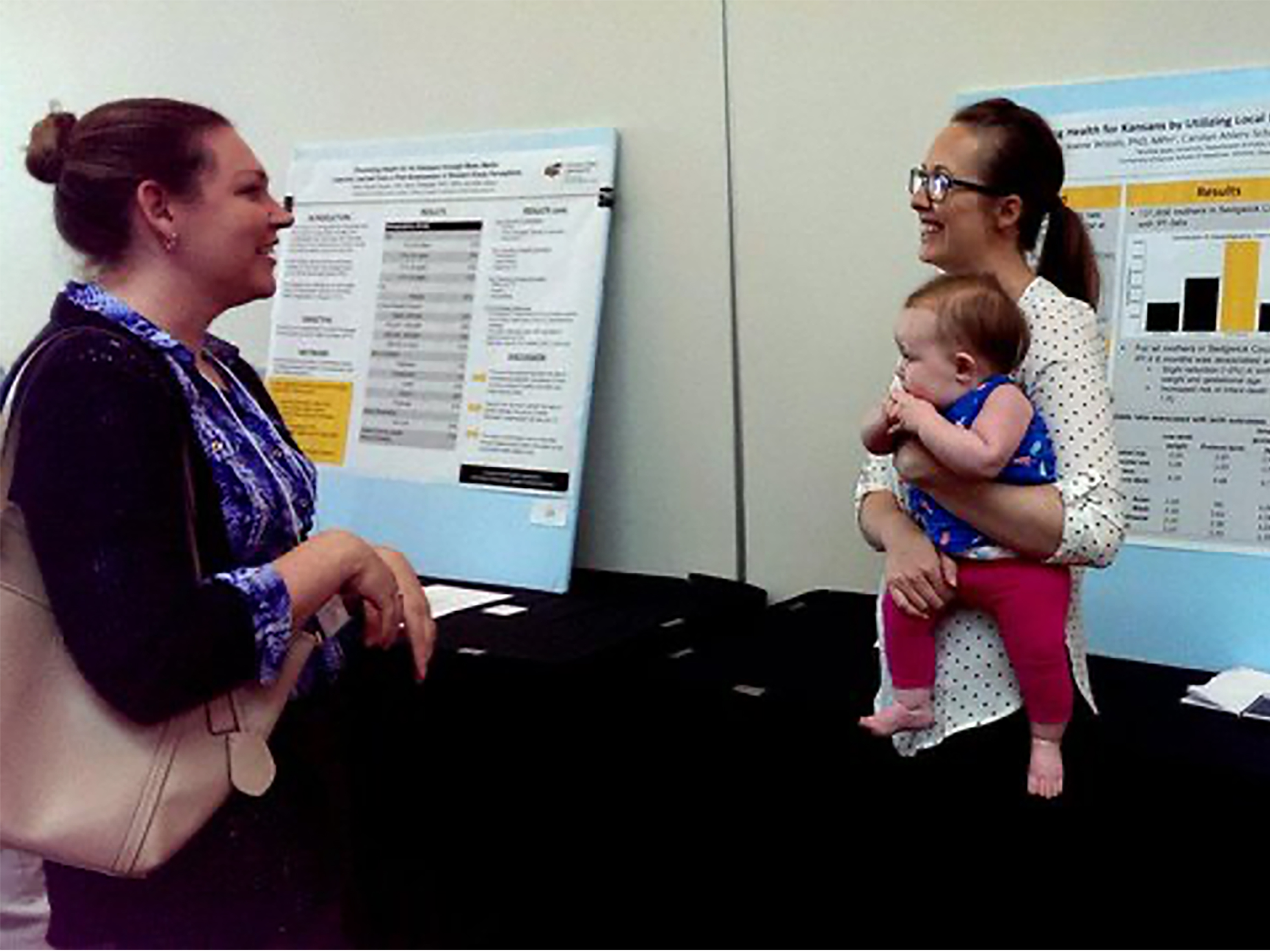A team of researchers at Wichita State University is working to promote health equity among vulnerable populations. The all-woman, cross-disciplinary team is focusing its initial efforts on issues related to obesity among underrepresented groups.
This project is one of four awardees of Wichita State University’s Convergence Sciences Initiative, which is an effort to bring together the intellectual curiosity and strengths of faculty and students from a range of disciplines and give them the support to develop research programs that drive the diversity and growth of the Kansas economy while addressing global challenges. Winners of the Convergence Sciences awards will be given $300,000 over three years.
“We are starting by looking at the obesity epidemic in vulnerable populations, but we hope to expand to other types of health disparities,” said Dr. Twyla Hill, professor of sociology and principal investigator of the project.
The seven-member team includes faculty from three colleges: the Fairmount College of Liberal Arts and Sciences, the College of Engineering, and the College of Health Professions. There will also be three graduate students engaged in the process — one from each of the colleges represented in the research. Co-investigators are Drs. Laila Cure, Nikki Keene Woods, Rhonda Lewis, Ajita Rattani, and senior advisors are Drs. Betty Smith-Campbell and Jan Twomey.
Hill said much of the collaborative process has been “learning each other’s languages.”
Keene Woods, associate professor of public health sciences, said cross-disciplinary research is necessary to solve larger societal issues across the globe.
“I appreciate the opportunity to collaborative with investigators who look at problems in different ways and have different resources,” she said. “Having a group of women scientists together at the table discussing complex issues such as health disparities has great potential for future funding successes and new student learning opportunities.”
A fresh look at an old problem
The problems and health risks associated with obesity have been well documented, but Hill said there have been few advances in actually reducing the rate of obesity, particularly among vulnerable populations. The Convergence Sciences team is hoping to find new solutions.
“We're hoping that by putting all our different ways of thinking about this together, we can find some new models,” Hill said.
The team is taking a two-pronged approach to the issue: prevention and community.
“We want to look at protective factors that are helping people not become obese,” Hill said. “Through health literacy programs, we want to focus not just at the individual level, but we want to identify neighborhood characteristics. Things like more green space or more grocery stores that communities could do to improve the health of people living there.”
One way to accomplish this goal is through education, Keene Woods said.
“It's about enhanced training across the health professions and other health-related disciplines in regard to health literacy and health disparities,” she said.
Though much of the information has been available for a while, Keene Woods said that information often leaves out the populations at the highest risk for obesity.
“I think a big strength of our approach is looking at the biases that exist in big national datasets that we rely heavily upon for public health policy,” she said. “Large datasets often don't represent minority populations and those most at risk for health disparities and specifically obesity.”
‘The sky is the limit’
Obesity seemed like the natural starting point to address health disparities, as it was a topic of interest for almost all the scientists on the team in some way or another; however, it’s just the beginning, Hill said. Future possibilities include opioid addiction, telemedicine, aging issues and artificial intelligence.
“I'm a maternal and child health researcher, so for me future studies will likely be focused on reducing health disparities for women and children,” Keene Woods said. “Dr. Hill's work with older adults will be another big area the institute can focus on. Our group continues to grow through the support of our collective members. The sky is the limit. I think there's a lot of different ways that we can go.”


 Courtesy
Courtesy